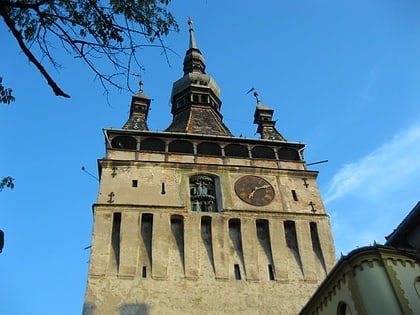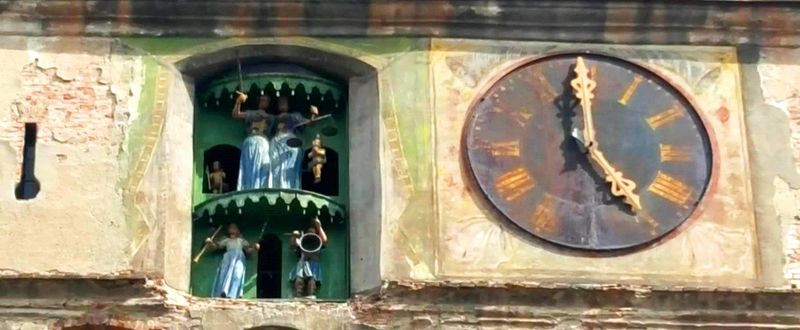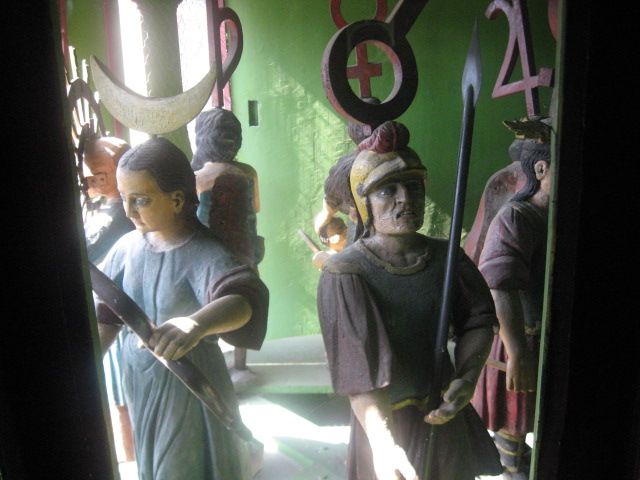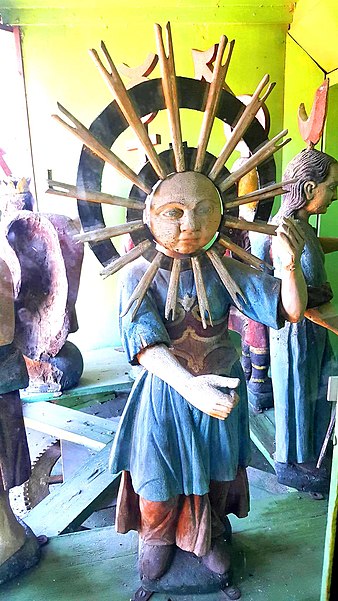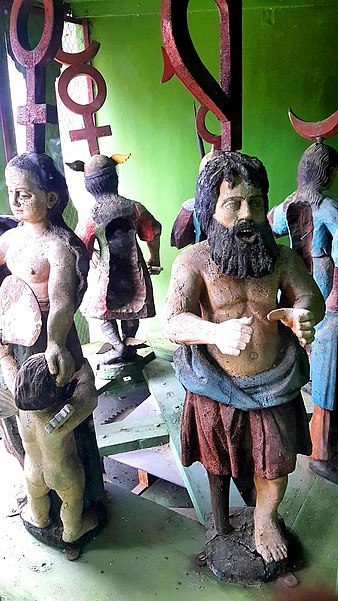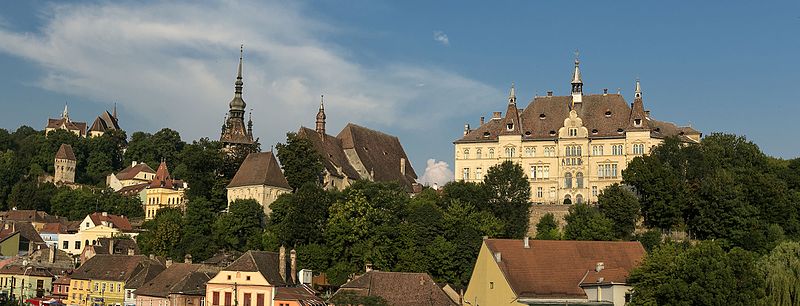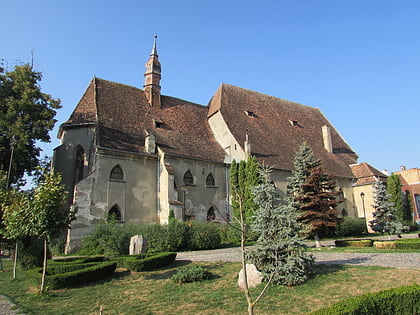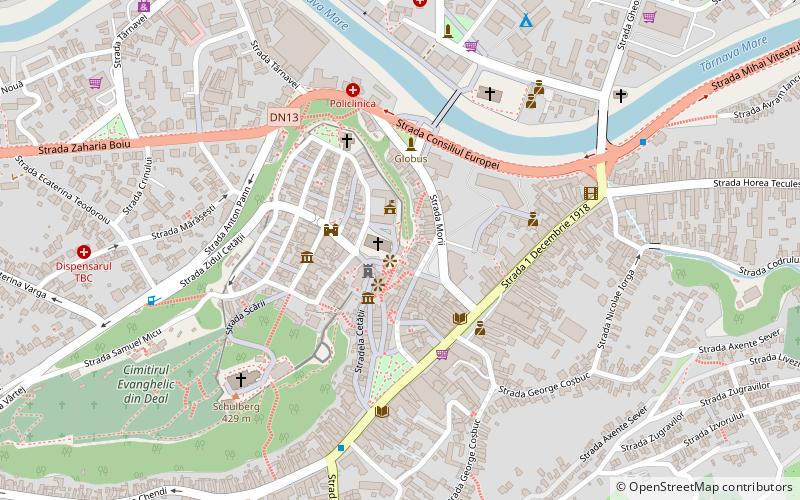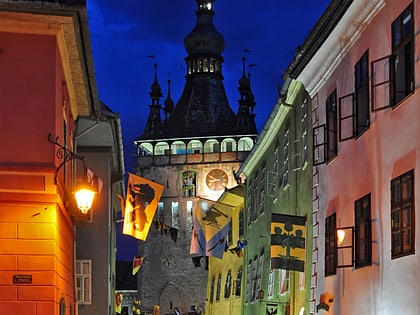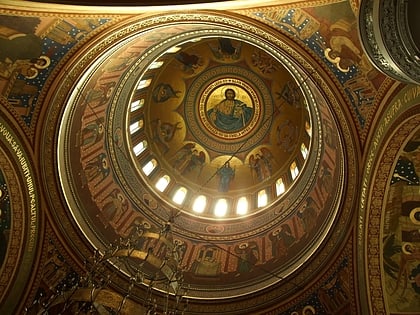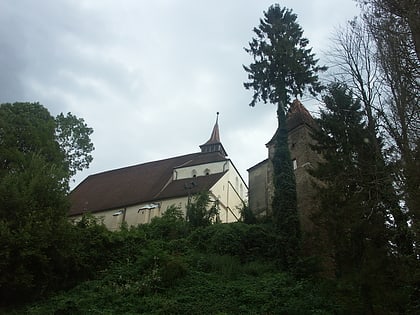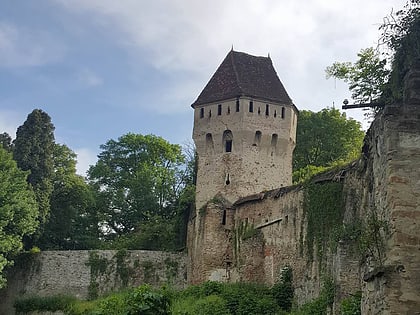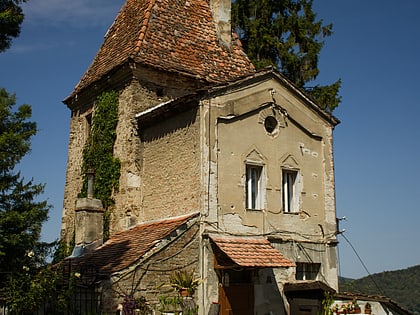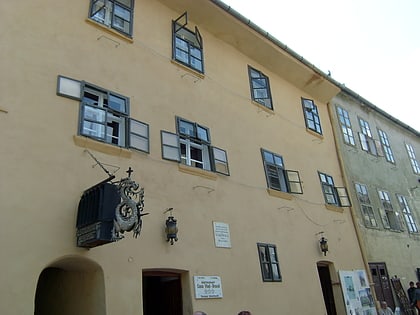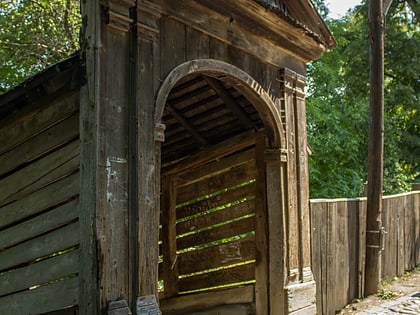Clock Tower, Sighișoara
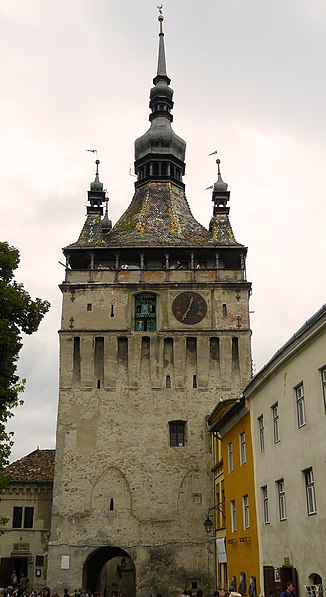
Facts and practical information
The Clock Tower, known as Turnul cu Ceas, is a defining landmark in the medieval city of Sighișoara, Romania. This iconic structure, which dates back to the 14th century, stands as a testament to the town's rich history and cultural significance. Rising above the citadel of Sighișoara, the Clock Tower is not just a historical monument but also serves as the main entry point to the old fortified city.
Standing at 64 meters tall, the Clock Tower has been the city's guardian and a symbol of the local residents' pride. It has a baroque roof, added in the 17th century, which contributes to its distinctive silhouette. The tower once housed the town council's meeting chamber and has served various functions over the centuries, including acting as a watchtower for defending against invaders and as a prison.
One of the most fascinating features of the Clock Tower is its clock mechanism, which dates from the 17th century. The clock is renowned for its figurines that move at the stroke of midnight, representing the days of the week, each with its own symbolic meaning. This feature adds to the tower's allure and makes it a significant tourist attraction.
The Clock Tower also contains a museum spread over several floors, showcasing the history of Sighișoara and offering visitors a glimpse into the past lives of its citizens. As you ascend the tower, each level reveals artifacts and exhibits related to the town's history, from medieval weapons to traditional costumes.
Visitors can climb to the top of the Clock Tower for a panoramic view of Sighișoara's old town and the surrounding Transylvanian landscape. The view from the top is breathtaking, providing a unique perspective on the well-preserved medieval architecture and cobbled streets that make Sighișoara a UNESCO World Heritage Site.
Clock Tower – popular in the area (distance from the attraction)
Nearby attractions include: Monastery Church, Iron Smiths' Tower, Sighișoara Citadel, Holy Trinity Church.
